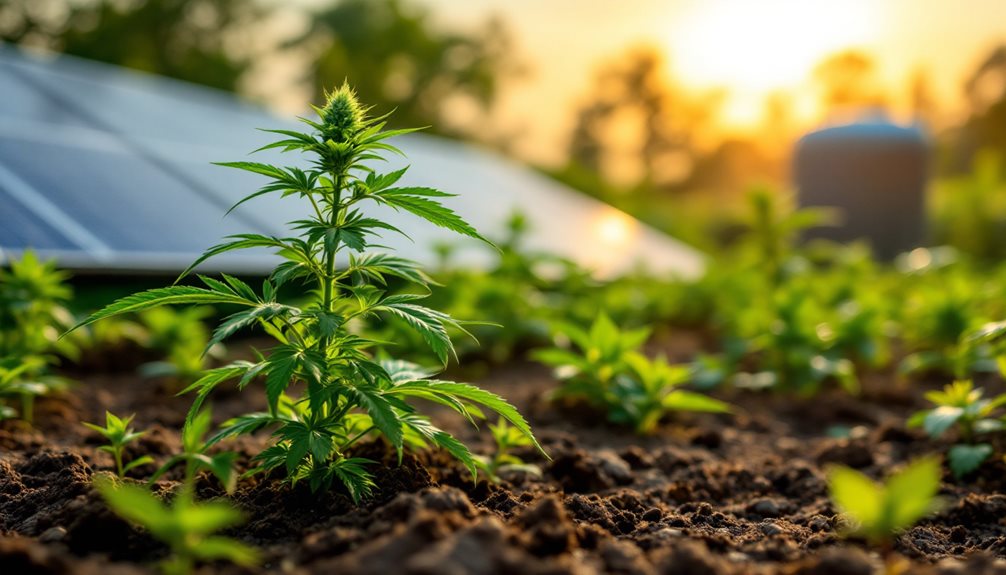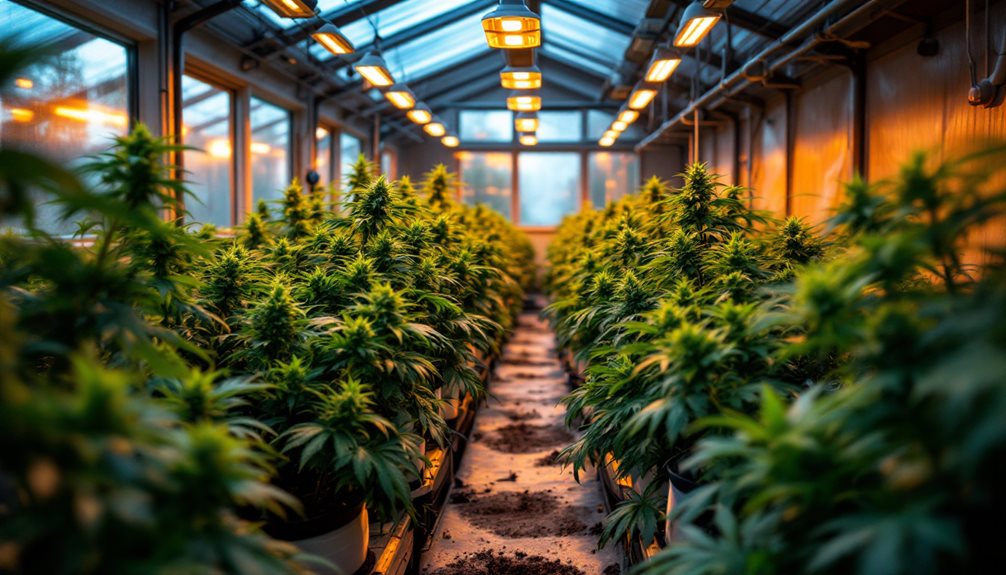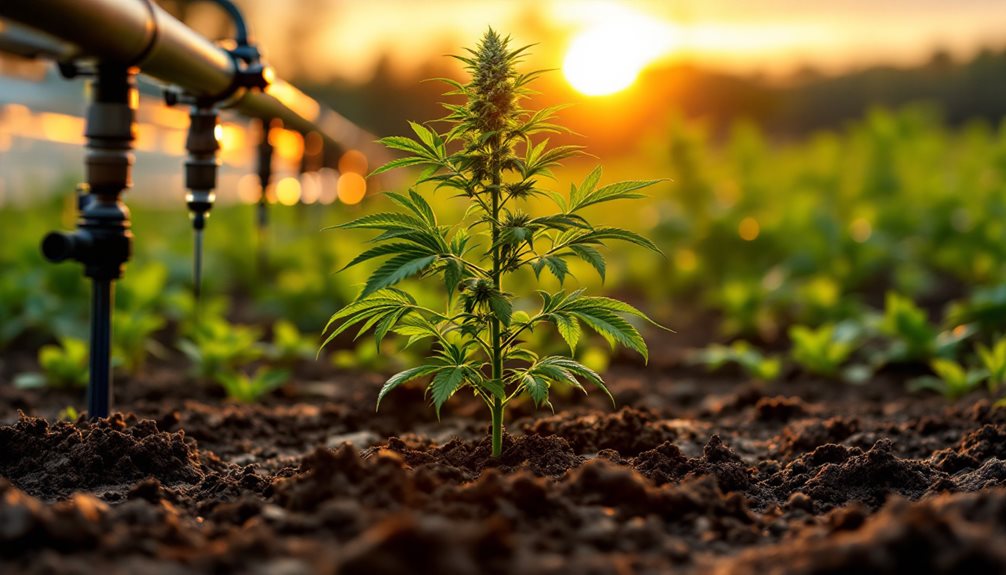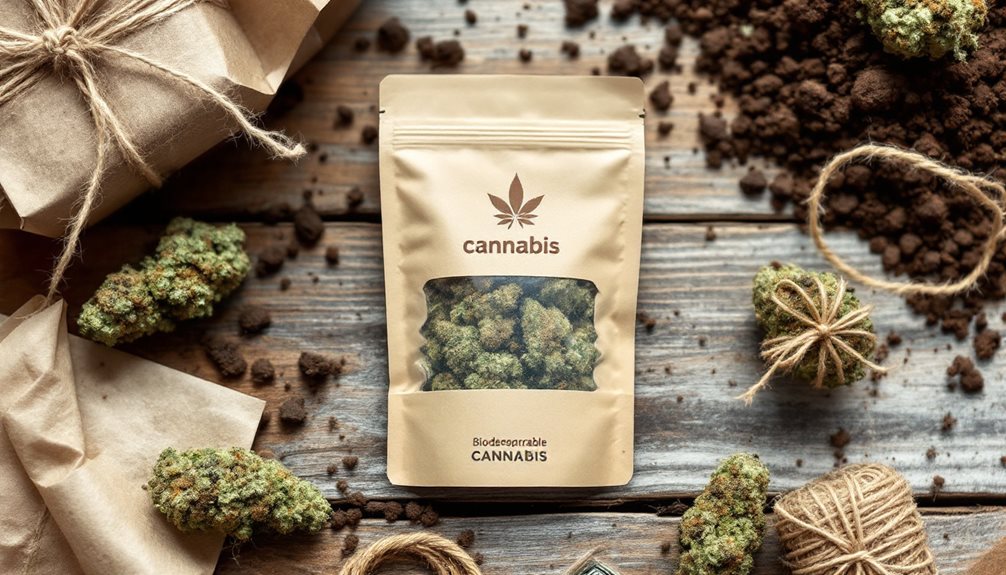We’re at a critical moment in the cannabis industry where our cultivation choices will shape its environmental legacy. As we’ve watched this sector expand rapidly, we’ve also seen its substantial ecological impact through intensive energy use, water consumption, and packaging waste. Let’s explore how we can transform cannabis production into a more sustainable practice, because the future of this industry depends on the decisions we make today.
Expert Highlights
- LED grow lights and smart climate controls reduce energy consumption by up to 60% compared to traditional growing systems.
- Water-efficient systems like drip irrigation and hydroponics can decrease water usage by 90% while maintaining crop yields.
- Sustainable packaging solutions include biodegradable materials and minimalist designs that reduce waste by eliminating unnecessary packaging layers.
- Certification programs verify eco-friendly practices, with options like Clean Green and Sun+Earth ensuring sustainable cultivation standards.
- Solar panels and renewable energy systems help offset power consumption while heat recovery systems maximize energy efficiency.
Understanding Cannabis’s Environmental Footprint

While cannabis cultivation has become increasingly mainstream, its environmental impact remains a pressing concern.
We need to understand that growing cannabis demands significant resources, from water and electricity to soil nutrients and pest control measures.
Indoor growing facilities consume massive amounts of energy for lighting, ventilation, and temperature control. A single indoor facility can use as much electricity as 21,000 homes.
The staggering energy demands of indoor cannabis facilities rival small towns, with each grow operation consuming power equivalent to thousands of households.
Additionally, outdoor grows often require extensive irrigation and may contribute to water scarcity in drought-prone regions.
Energy-Efficient Cultivation Methods and Technologies

To reduce cannabis cultivation’s hefty energy demands, growers can implement several innovative technologies and efficient methods.
We recommend LED grow lights, which consume up to 60% less electricity than traditional HPS systems while delivering ideal light spectrums.
Smart climate controls automate temperature and humidity, cutting unnecessary HVAC usage.
Solar panels and renewable energy systems offset power consumption, while heat recovery systems capture and recycle warm air.
When combined with building automation systems that track real-time energy use, these solutions help us cultivate cannabis sustainably while maintaining quality and yield.
Water Conservation Strategies for Cannabis Growth

Beyond energy efficiency, water conservation stands as another key pillar of sustainable cannabis cultivation.
We can dramatically reduce water usage through several proven methods: drip irrigation systems that deliver precise amounts of water directly to plant roots, soil moisture sensors that prevent overwatering, and water reclamation systems that capture, filter, and reuse runoff.
Let’s also consider hydroponic setups that use up to 90% less water than traditional growing methods.
Sustainable Packaging and Waste Management Solutions

Since packaging waste accounts for nearly 30% of the cannabis industry’s environmental footprint, implementing sustainable solutions is crucial for reducing our impact.
We can start by choosing biodegradable or recyclable materials like hemp-based plastics, glass, or post-consumer recycled packaging. Let’s minimize excess packaging by using right-sized containers and eliminating unnecessary layers.
We’ll also need to establish take-back programs where customers can return containers for reuse or recycling.
Certifications and Standards for Eco-Friendly Cannabis

Maneuvering through the complex landscape of cannabis certifications can be challenging, but understanding these standards is essential for both producers and consumers.
We’ve identified key certifications that guarantee your cannabis products meet sustainable and eco-friendly standards.
- Clean Green Certification – The organic standard for cannabis, verifying sustainable growing practices
- Sun+Earth Certified – Focuses on outdoor cultivation, fair labor, and community engagement
- USDA Organic – Available for hemp, guaranteeing chemical-free cultivation
- Fair Trade Cannabis – Promotes ethical labor practices and community development
- EnergyStar Certification – Recognizes energy-efficient indoor growing facilities
These certifications help us make informed decisions while supporting environmentally responsible cannabis production.
Frequently Asked Questions
How Does Organic Cannabis Cultivation Affect the Final Product’s Potency?
When we grow cannabis organically, we’ll typically get higher terpene levels and cannabinoid concentrations, since healthy soil and natural nutrients help plants develop more robust chemical profiles.
What’s the Cost Difference Between Sustainable and Conventional Cannabis Growing Methods?
We’ll pay 20-30% more initially for sustainable growing methods, but we’ll save money long-term through reduced water usage, natural pest control, and lower energy costs while producing cleaner cannabis.
Can Sustainable Cannabis Practices Work in Home Growing Setups?
We can easily implement sustainable practices in home grows through LED lights, rainwater collection, organic soil mixtures, and natural pest control. It’s actually simpler in small setups than commercial operations.
Do Eco-Friendly Growing Methods Affect the Terpene Profile of Cannabis?
We’ve found that eco-friendly growing actually enhances terpene development through organic soil, natural pest management, and proper light cycles, giving us more flavorful and aromatic cannabis for our patients.
How Long Does Sustainably Grown Cannabis Take to Reach Maturity?
We’ll typically see our sustainably grown cannabis reach maturity in 3-4 months for autoflowers and 4-6 months for photoperiod plants, depending on the strain and growing conditions.
Expert Final Thoughts
We’ve explored how sustainable cannabis practices can revolutionize our industry’s environmental impact. From implementing energy-efficient technologies to adopting water conservation methods, we’re seeing positive changes. Let’s continue pushing for eco-friendly packaging solutions and pursuing green certifications. Together, we’re building a more sustainable future for cannabis cultivation that protects our planet while meeting growing market demands.





Join the Discussion